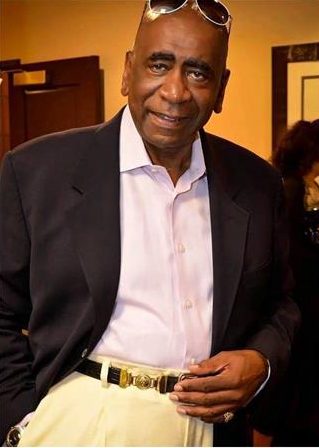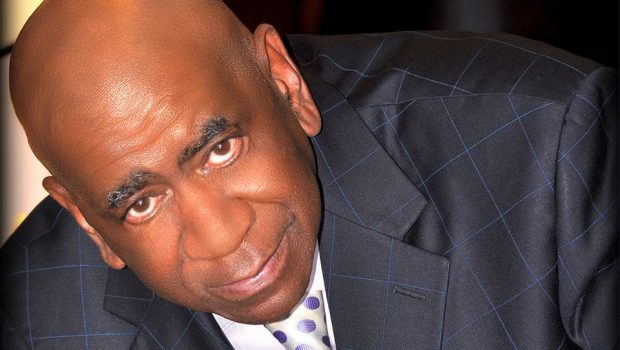Magazine Consultant John Blassingame: Behind the Pages of Urban Media
Some feel that print magazines have run their course however, I had the opportunity to speak with one of the most prolific magazine publishers in the business. Mr. John Blassingame, he’s president and CEO of New Day Associates, he’s also the publisher of Today’s Black Woman and Black Men Magazine and the former publisher of Hype Hair. According to Mr. Blassiname, print is not dead but the overall strategy has changed from the time he began his career and today’s age. Mr. Blassingame weighs in on the struggle of the startup magazine and how to successfully navigate the retail realm as well as giving us a history lesson!
It’s always amazing when we get a chance to talk with someone historical like yourself and let you refresh us about media history. Much has been lost, but you’re our preserver, you’re our conservator.
Let me say this; let’s start with; it has been a journey. I can remember starting with a magazine or a company called Hearst Magazines. Hearst is the publisher of Cosmo, Good House, Harper’s Bazaar, Town and Country, Sports & Field, Road and Track, all the major titles. I was one of the first blacks that they hired. And I worked out of a company called Hudson County News, I was their local rep for about three or four years, after high school and in college.
It was a; I should say, a journey because at our sales meetings, I was the only black there and I had an afro at that time. You know how that was [laughter] and how I stood out amongst all those vanilla flavors but I endured. I endured because of one reason; I understood that I had, that I was a unique individual in the magazine distribution, hard copy, and publishing industry. So what I did, I took all their jokes, all their sarcasm said, okay, I have a purpose for being here.
 Okay, I worked with them for five years, got passed over because the next step up was district manager, I was passed over for district manager for about three times, and then they finally had to bring me in. Okay?.
Okay, I worked with them for five years, got passed over because the next step up was district manager, I was passed over for district manager for about three times, and then they finally had to bring me in. Okay?.
And when finally I got my opportunity, all right? So they made me district manager, but the only thing they didn’t do was give me that proper training that they gave all the other individuals.
They left you hanging out to dry, huh?
They were, how do you say? Propping me up to fail.
But you know, I said no, I’m not going to let them do this to me, I have a purpose for being here. So I learned. Usually, the other guys were going home at three and four, and I was staying there. I was getting the information, getting all my sales reports in, et cetera because I knew there was a reason for me being and doing what I was doing, all right?
So I worked with them for about eight years, and I saw…you know they talk about a glass ceiling?
Yes, sir.
Okay, I saw that glass ceiling, and I knew that with this company, I’m not going any further. So I went with a company called Metropolitan News, there was a territory war going on, at that time, between a company called Manhattan News and this new company called Met News. They said to me, “with my experience they could help me, John I’d like you to come work with us as our Director of Circulation and New Accounts,” so I went, and I worked with Metropolitan News Company.
Nervous as I was, because the industry at that time was all mafia, and you know, I’m going to all the major chains, like the Red Apple and some of the supermarket accounts in New York and letting them know, “Hey, we can do this for you better than other company can do and et cetera. So I picked up some of the major accounts from them. I worked with them; I would say, another four years with them. Then I had an opportunity to go with, and I know you heard of this magazine, Players Magazine.
Yes, I remember that.
Okay, Players, Players Classic, Players Pictorial and this book line called Holloway House Books, Donald Goins Iceberg Slim, Radcliffe, etc.
I remember, yeah.
Okay, well, the owner was a Jewish guy named Bentley Morris, and Bentley came to me and said, “You know I need you because we have a new African American title, called Players, we have a book line called Holloway House Books, and we need you to represent us on the East Coast.” And at that time I was still a young guy, you know, they give you a company car and gas credit card and expense account, and wow, I thought I made it [ laughs] at that time, you know? So I started to work with them, and I got them, you remember the stores FW Woolworth and McCory’s.
I remember Woolworth’s.
Yeah, FW Woolworth their office at that time, I think it’s still, no they’re no longer there, it was downtown on Broadway, downtown Manhattan. And their buyer’s name was Mister Mike Rice. Bentley Morris wanted to get into those Woolworth accounts because most of them, a lot of them were in the African American community.
They’d be in the malls and whatnot?
That was even before malls.
That was back in the day, that was WT Grant and FW Woolworth days. So I went to the buyer and said, “Mike, look I don’t want to go into every area, I just want to go into the areas where, you know, we have our audience.” For instance, they had a store on 125th Street in Manhattan and Atlanta they had it on Peach Tree Street, you know, Detroit Avenue and 8 mile, every area. So I got Mike to go ahead and approve the title for all the Woolworth stores in the Afro American area, and that was close to about a thousand stores. He had a gentleman; the gentleman’s name was Sid Smith. Sid came up with the idea of Players Magazine.
Okay.
Remember how it was Players Magazine, for he who is a player, okay? And he had the concept, but he didn’t have the money. So he took it to Mike, and that’s how Players Magazine started. And Bentley, of course, Bentley Morris took it from him.
Okay, and so I took it to another… some of the wholesalers, we had Hudson News, they had back then, they had Electro News in Manhattan, Union County News Company, and et cetera. I got it all on the entire East Coast for us, built the magazine up.
Wow.
There was then this company called Disticor. Disticor is still an existing company now, I did some things with that. They came to me because of the publications I was working with, they went with Disticor, and they heard of my name in the industry. They said, “Hey, we’re trying to break into the US market, would you be interested in working with us, with a number of our titles and bringing new titles to us for the company. You would be our US Circulation Manager, there’d be an expense and a car,” and it was an excellent salary, a decent wage, so I said, yeah, this is more knowledge and training for me because I’m working internationally.
So I started with this, and they made me a promise, if we did, I think they were giving us maybe a million and a half, okay? That’s when we started; I took them up to about 12 million dollars annual fee because I brought on new titles. They had a title called Hockey News. I took that title and crossed the wholesale agency. Remember when I was in the industry when I first started, there were 600 wholesalers across the country now there’s only 3. That’s CoMag, they have the Hearst circulation and a few others, but they have slowed down. Well, you know about the magazine industry now it’s gone, to social media and the young folks, they don’t even look at print that often, but that’s the way it is now.
May I mention some of the magazines that I helped get off to the start?
Please do that, yes.
Upscale, Straight Stuntin, Don Diva, Fez, Network Journal, Sheen Magazine, a host of others, any magazine that was starting in the industry. I had developed my reputation and a name, that they would come to me, to get them started, to get them out the door.
But getting back to Disticor and telling you how I started New Day, is once they got to where they were, self-sustaining in the US, so to speak, they made a promise that I was going to be the GP in charge of the US. Instead of keeping their promise they brought a guy in, and I still remember his name, Tommy Barshul and put him as the GP and told me, “John we’re still are going to need you as the US Circulation Manager, okay? We’ve got an office in New York on 42nd and Lexington. At that time, I said, “Ok, no more.” In 1985, I started New Day Associates, and I told some of the publishers that I had purchased Disticor, and I am leaving. I’m starting my own circulation company. They said, “John if you go, we’re coming with you.” And that is how New Day started.
We’ve been moving on all the way since then. I was the founding publisher of Hype Hair, Today’s Black Woman, Black Men’s Magazine. As I said, I was the gentleman that helped start up a lot of Afro-American publications. That’s what I’ve been doing every since, besides producing four shows a year. We do the International Model of the Year, the International Designer, we also do the Fashion Film and Music Industry Networking and the International Beauty of the Year.
That happened this past January right?
Yes, The Fashion Film and Music Industry, happened January the 19th. We had our men’s collection and fashion from the music industry network. That was January the 19th, 2019 at the Marriott at the Newark International Airport.
I’ve been there, and it’s a fantastic experience.
Oh yes, oh yes. That’s right; you were there with Jameelah and everything.
Yeah, I’ve been there several times, amazing experience, each year.
Hype, you guys, sponsored our winner for the artist showcase that we had, we put her in the magazine, and she’s been going ever since. She’s been doing fantastic.
We have a new magazine called Cool America, it’s similar to a GQ, out of New York that’s coming out. We have another publication; I barely go on international but we have this publication, called Amarta Magazine A-M-A-R-T-A and Amarta it’s from the country of Georgia. This young lady, Irona had started the magazine, when Georgia got it’s independence, back in 2000. And she’s been publishing it ever since to today, but it is a very high-end high fashion magazine. They have ads in like Porsche, Rolex, Sachs Fifth Avenue, they have major ads. Some of the top designers from Paris are in this magazine. It’s a magazine on another level, and they came to me because she wants to start an American edition of Amarta Magazine. So, I’m working on that.
We’ve got a lot of things on our card, trying to put it together and make it happen. What I do is I help young publishers, young designers, young models, hairstylists, makeup artists, who are trying to break into the industry and of course, I helped Mr. Bronner from Upscale Magazine, and that was 20 something years ago.
When he came to me, he had a magazine called Smart Shoppers, which is a magazine with coupons, and he printed up 200 thousand copies of it. So I say to him, you don’t need that, you’re spending 30 thousand 40 thousand dollars in advertising in Essence and Ebony, why don’t you go ahead and start your own magazine and do your own thing, using your advertising dollars. And that’s what he did. Upscale now, as you well know, it’s been around 25 years now. And I am the Director of Circulation.
You know, a lot of people think that the media industry is gone or that you need to be the reporter or the personality.
No, there will always be hard copies. You know advertisers love to see the magazines, it’s changed, the method of distributing has changed. Right now, we are looking at being in some of the bookstores, with some of the special interest publication, music, fashion, that’s where it is right now. You can’t print up 100 thousand or 50 thousand and throw it out there as you used to and you get some decent sales. You have to specifically target market where you want to be with your magazine. That’s how that is today; it has changed tremendously.
The shotgun effect no longer works.
No, no shotgun, that’s out now, you’ve got to take your magazine, know where you are going, and know how to get there. As long as you can get it into some critical locations as I said, the bookstores, some supermarkets, some drug accounts, like a CVS or a Rite Aid, but you don’t want to be everywhere anymore. You want to target your market, and you want to make sure that you do a comparative to another title, that’s if you have a title that you can compare it with, use that title. See where it’s selling at and that’s what’s going on in the newsstands today is that you’ve got to be very specific as to where you want to be and you can’t print up a lot of copies and throw them out there anymore. You’ve got to know precisely.
You have to move strategically.
Exactly, you lose your shirt, immediately, you know, the print cost is high, graphics, then you’ve got to buy programs, once you get it out there, you’re going to have to buy programs for getting into some of these major chains and retailers that you want to get into. They charge you, so you’ve got to do your due diligence. You can’t just take a couple of magazines and upside the sale out, say I’m going to do this, I’m going to get this, uh-huh, you’ve got to know where you’re going. And that’s how you’re going to get there.
It’s a career path, doing what you do and you know, you try to remind young people that there are behind the scene skill sets that are massively important, in continuing the drive in media. Media has changed, so we need people who know how to do the marketing, who know how to be a magazine or a publication consultant.
Exactly.
What do you tell young people who are so stuck in front of the camera, that they forget what you do?
Do your due diligence. Do your homework. Get a mentor. Find somebody that that’s been the road map, that knows exactly where to go to get things done. I’ve been in the business for so long; I could make one phone call to this person or to that person and say, “Hey, I’ve got this new… Can we do this? Can we work it this way?” Our worst enemy is that we don’t know. And the more you know, the more you know that you don’t know.
I’ve had publishers come in and forgot the put the UPC or the bar code or the issue code, and now they’ve got to spend another 2 thousand dollars to get it stickered before they put it out. If you don’t know, you can lose your shirt in this industry. That’s why you have to do to your due diligence, do your homework. Know exactly where you’re going with your book.
First of all, do your research on your publication that you’re putting out there. Look and see who’s out there now, in my category, in my field? What are they doing? Is this a viable field? Who’s my market? What age group? As I said, first, you’ve got to do your due diligence. Then you’ve got to research your name, don’t get some name out there and don’t research it and put it in print, and then find out somebody else has that name. These are all the things you have to go through, and that’s before you even think about putting it out there; you’ve got to do your research on your title.
Then you go on the newsstand, take a look and say, okay, what’s the positioning for my title on the newsstand? What colors stand out more so? How does the lettering stand out on the newsstand? As I’ve said, you go, and you look on the newsstand, you survey, you see what’s better? How’s a better way of putting it out? How much of my magazine is going to be shown? All that stuff is targeting and making sure you get an opportunity.
You call that positioning.
It’s positioning, yeah. What is your landscape? Because your cover is your most important item when you are looking at it. In other words, that cover, if that cover is wrong, it’s not going to sell because magazines sales are impulsive, on the newsstand. It’s an impulsive item, so you’ve got to make sure, if you’re a new name on the rack, you’ve got to get a known person on that cover. A magazine called Straight Stuntin, when he first came out there, they didn’t know who Straight Stuntin was, but DJ Kay Slay was putting it out, so he pushed it out there. Straight Stuntin and DJ Kay Slay and they used a lot of the artists, Papoose, and all those guys. So these are things that you’ve got to know.
You’ve got to have that inside track.
And like I’ve said, I’ve had it because I’ve been there and done that and I’m back.
What excites you the most about the magazine world in this day and age?
Wow, well I tell you one thing when I look at the landscape, and what I see, how many publications are out here, it’s not what excites, it’s some of the things, I see, and I know. As I said, I try to educate, I’ve even thought about doing a seminar on magazine sales and publishing a magazine to help these guys.
What are your thoughts on the legacy of Black Media? How do we hold on? Why are we losing ground?
Because of the young folks, they’re not purchasing print media anymore. All of the young people are on that little gadget that they hold in their hand 24/7. That’s why sister to sister, Jamie Foster, look at Ebony. It used to come out monthly, Jet, now it’s online. Essence in the day, I’ll tell you, they used to do a million and a half per issue, now I don’t think they do 200 thousand, but where they make their money is on the Essence Festival, that’s where their money is coming in.
Printing is still important.
Oh, it’s very important because of the advertisers.
Right, okay.
It is essential; they want to see a hard copy. We have an adjustment in the magazine industry, but hard copy is vital to us. That’s it.
I love the fact that we got a chance to run through your history. What’s your favorite teaching slogan?
I always say that your network is your net worth. That’s what I say; it’s up to you because only you can change your direction, nobody else but you and that’s what I tell young folks today. No one else but you can change your direction, when you change the way you look at things, the things you look at change. Your attitude is going to be your longitude. I always tell them, take it to the top on you. Take it to the top on you. That’s how I end it, that’s how I say it, that’s how I end it.
Find out more about Mr. John Blassingame and New Day Associates via their official website https://www.lindennewday.com want to find out more about starting your magazine and what it takes? Contact Mr. Blassingame here
Tweet



































